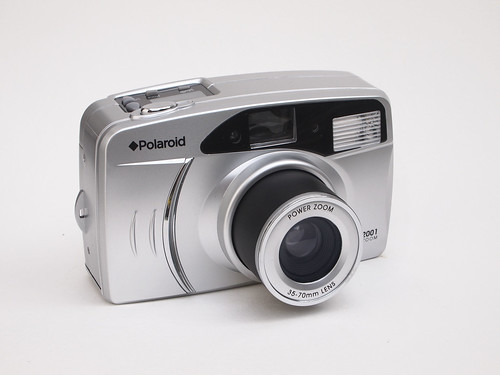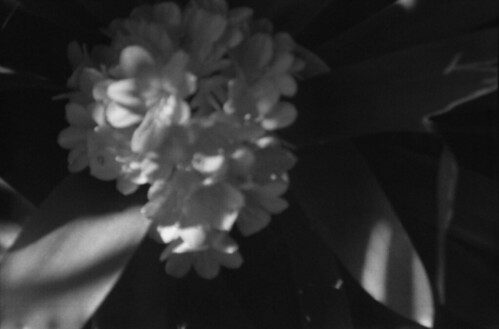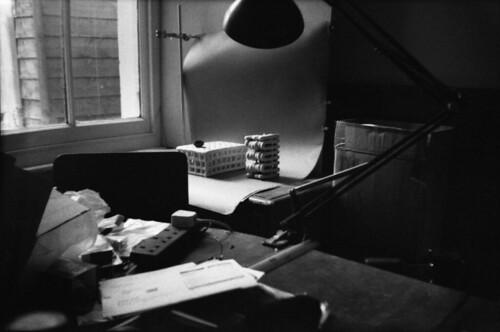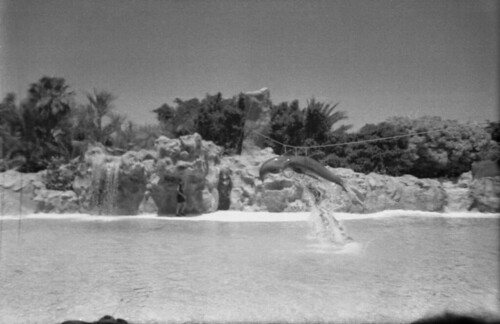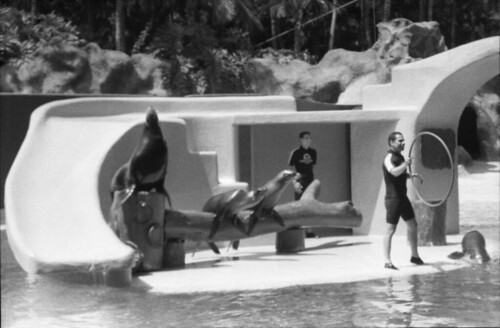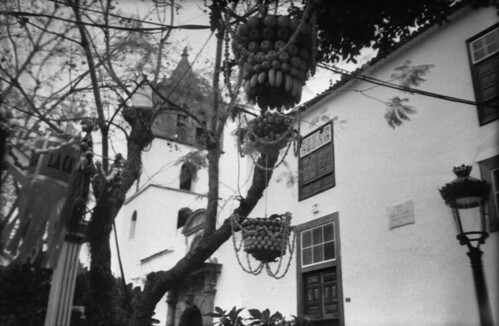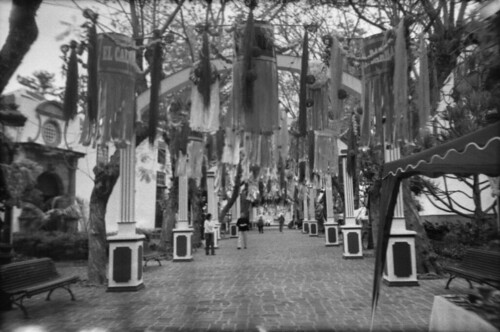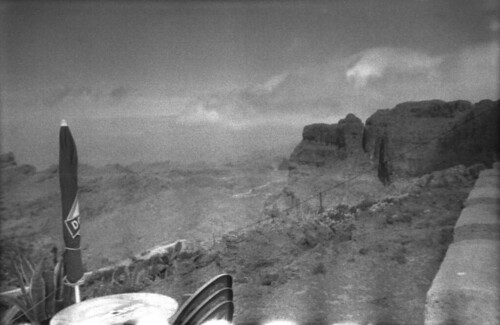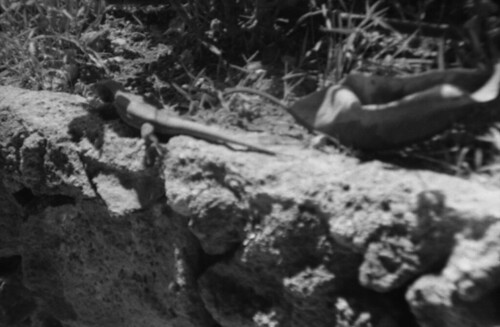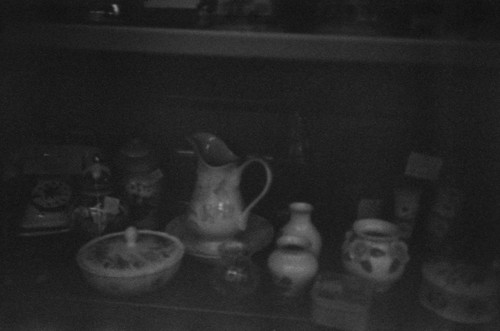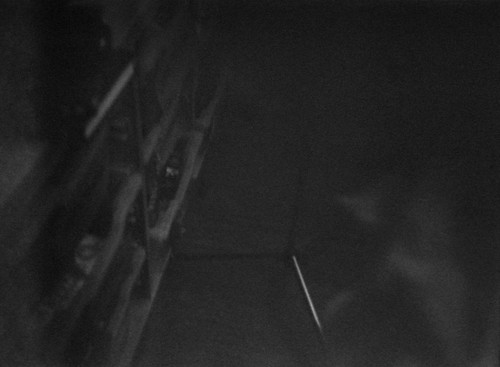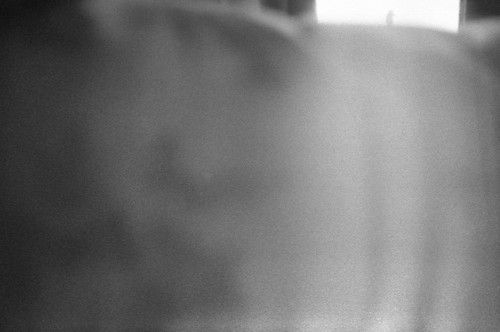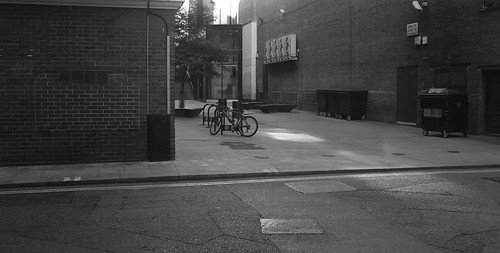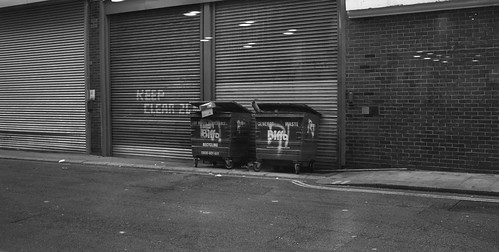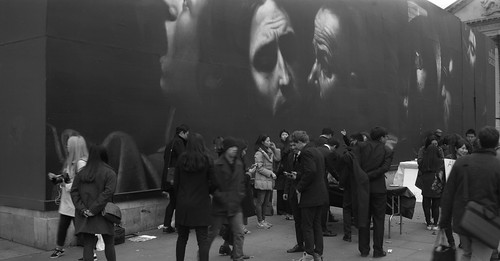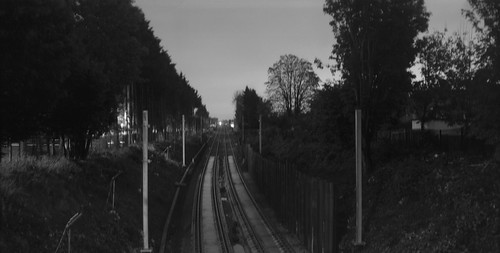 |
| Zeiss Ikon Cocarette 519/15 |
Many months ago, I shot a handful of test rolls with the
Zeiss Ikon Cocarette,
but then put this to one side as a consequence of initial results which were disappointing. Earlier this year, after acquiring a No.2A Brownie in a job lot of cameras, my interest was reawakened: both cameras use the obsolete 116 rollfilm format and I wanted to shoot with both on 11/6 this year for a '
116 Day'; following this, last week I used the Cocarette again on
6th November as another calendrical 116 Day. When I'd made my first tests with the camera, I had begun to write up my experiences, of which it now seems like an opportune time to revisit, revise and post.
 |
| Zeiss Ikon Cocarette 519/15 |
Having some years ago written a post about the
Icarette L, before writing about the
Cocarette, I also wanted to pass comment about the popularity of camera names ending in "-ette" during the first half of the 20th century. Nettel's
Piccolette was the first example I could find; both the Icarette and Cocarette were later but contemporaneous to each other and a little research has also thrown up the Gewirette, Makinette, the Pearlette, a Japanese copy of Piccolette, itself inspiring copies called the Dianette and Pionette, and the Nifcarette and Rollette. With the Piccolette and other
127 format vest-pocket cameras, the "-ette" suggests a small, compact camera, which my Cocarette certainly is not, being 20cm tall - partly due to being the 116 version. Like the Icarette with Ica, the Cocarette name was given to a new prestige line of folding cameras produced when
Contessa-Nettel was formed by a merger in 1919, it came in a number of formats, and, also like the Icarette, this camera was continued by
Zeiss Ikon once Contessa-Nettel had been combined into the new company, although it was discontinued earlier, around 1930 (the Cocarette does not appear in Zeiss Ikon's 1931 catalogue).
 |
| Carl Zeiss Jena Tessar lens in Compur shutter |
My example ot the Cocarette dates from after the formation of Zeiss Ikon, and is badged as such around the lens, on the folding bed, and imprinted on the leather at the top of the body; the name Cocarette likewise appears in three places, while the model number does not, but possibly this may have been on the handle, missing on my camera (it does, however, still have the folding stand on the drop bed's front that appears to be missing on most extant examples of the Cocarette). Provided with a reputed 64 combinations of lens and shutter variants, my camera has the top-of-the-range Carl Zeiss Jena Tessar f4.5 120mm lens and Compur rim-set shutter. Both lens and shutter serial numbers can be dated to 1929, being relatively late in the production run. The focal length of the lens is a giveaway for the film type that the Cocarette uses: had the lens been 105mm, this would denote 6x9 on 120 film; that the lens is 120mm indicates that the Cocarette takes a 6.5x11cm frame size on 116 film - although not true for
all cameras, this is a very good indication. Zeiss Ikon were systematic in assigning catalogue numbers to all their cameras (all Zeiss Ikon products in fact), although many cameras in certain markets were also referred to by a letter suffix to indicate different specifications; my Cocarette is a
519/15: the first number denotes the camera model, the second number the film format
and frame size. All Zeiss camera models /15 would therefore shoot 6.5x11cm frames on 116 film.
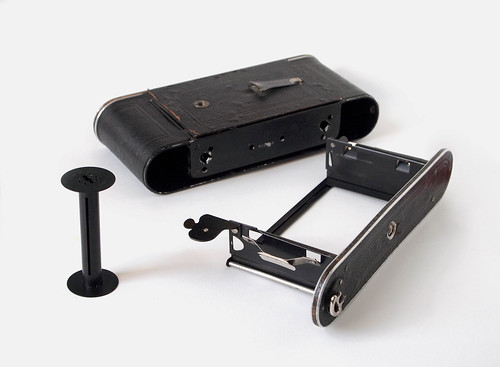 |
| Zeiss Ikon Cocarette opened for loading |
The Cocarette has an unusual system for loading film: the top or side, depending on which way the camera is held, has a sliding latch, which when unlocked allows the user to remove a frame into which film is loaded (this is described as the camera's 'film race' in this
US advertisement). There are two hinged flaps which hold the film spools either side, and the film needs to be threaded between inner and outer rails; this design appears to have been developed from Contessa-Nettel's earlier
Piccolette, which was an improvement on the drop-in loading of the
Vest Pocket Kodak that inspired it. It also appears that this design was promoted to reassure customers used to glass plates about film flatness -
this advert describes it as entirely eliminating "buckling of the film".
Apart from the 'film race', the Cocarette functions as a fairly typical folder of its day. The camera is non-self-erecting: the lens is pulled out to the infinty stop of the folding bed's rails by hand. Frame advance is by red window and backing number, focus by estimation using a lever with markings for infinity, 30, 15, 10 and 6 feet (indicating this as an export model for US/UK markets); the focus lever does advance the lens further forward than 6 feet, but without distance markings, possibly as the margin for error when focussing may have been felt to be too great beyond this point. The rim-set Compur shutter has the full range of speeds from 1 second to 1/250th, as well as T and B settings; the f4.5 Tessar lens stops down to f32. For framing there is a brilliant finder with spirit level that rotates through 90º for horizontal shots and a wire frame finder: to use this, on the body is a small peep-sight that can be raised into position from a circular door on the back of the camera. This allows access to the lens for cleaning and removal (a feature that the Vest Pocket Kodak also possesses); either completely raised or lowered, this sight locks the rear door, but in an intermediate position the door can be rotated to remove it. Additonally, the lens is also provided with rise and fall in the vertical position.
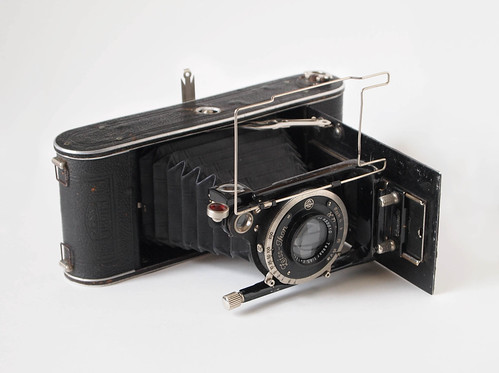 |
| Zeiss Ikon Cocarette in horizontal format with wire frame finder and sight raised |
My approach to converting the Cocarette to use 120 film was to do this in a non-destructive way, such that the camera could potentially use 70mm film in future - or, as on the
Summer 116 Day, I used some original, expired 116 Kodacolor film. Research online shows two aspects to this conversion - firstly, some method of securing 120 spools into the slightly larger gap for the taller 116 spools - which needs to include the ability to wind on the advance key, and secondly, masking the frame itself down to the width of 120 film. With access to laser cutting facilities at the time I bought the Cocarette, I had
adaptors made that would fit the top and bottom ends of spools from acrylic. Initially I thought that this would be enough, but when attempting to load camera with 120 backing paper as a test, there was too much of a curl to the paper at both top and bottom - as the 11cm wide frame doesn't hold the smaller format taut across it. Perhaps in a more conventional folding camera, this could be used without masking, although cupping of the film would potentiallt affect the focus on the film plane. I made a mask simply by cutting runners from thin black plastic sheet, which I taped to the top and bottom of the frame, but the camera also needed another pair of small runners
inside the slots themselves to ensure that 120 film runs straight down the middle of the 'film race'.
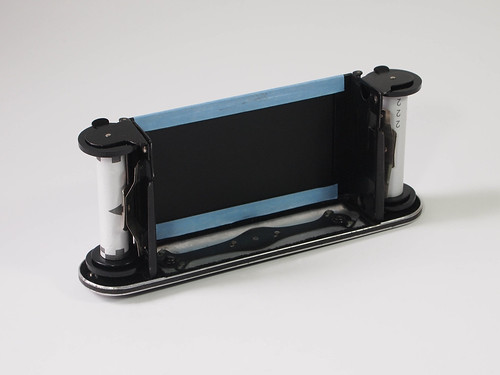 |
| Zeiss Ikon Cocarette conversion - runners taped in place |
I didn't make any changes to the viewfinder of my camera. Some examples of 116 conversion show the wire frame finders adapted to take into account the narrower frame. However, as using the wire frame finder - or brilliant finder for that matter - isn't exactly precise for the frame edges, and with 120 film only a small fraction is lost from the top and bottom of this image, I felt this to be unnecessary.
To test the frame spacing, I ran a roll of 120 backing paper through the Cocarette. The numbers which align with the red window are those for 6x4.5 exposures. As this exposure size isn't neatly divisible with the 11cm-long 116 frame, I counted turns of the wind on key to determine how far to advance the film between exposures. My first calculations were that I would need to make the first exposure starting with the number 2 on the backing paper to provide enough film to cover the frame; I estimated that 2 and 1/3 turns of the winding on key for each subsequent exposure was sufficient. To make this easy, there are three screws around the winding key to mark its position when turning. For the first test roll I simply discounted the problem of the circumference of the take up spool increasing as more film and backing paper is wound on. The first two images on the roll overlapped, but I then found an increasing distance between the frames. When I developed the first test roll, as well as the uneven spacing, this was marred by obvious light leaks (I discounted this being from the red window, as this should be light tight anyway - even with modern emulsions, the film's backing paper should be perfectly impervious, despite some comments that occasionally crop up in discussions online). Looking at the light leaks' position relative to the camera, it was clearly caused by a missing screw on the side which removes for loading. As I couldn't find a screw of the right dimensions to replace it, I simply used black tape to cover the hole from the inside.
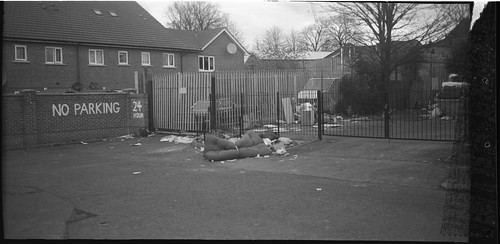 |
| Second test roll, Fomapan 400, first frame showing tape mark at start of film |
For a second test roll, I took the first two shots with a gap of 2 and 2/3 turns, then 2 1/3, finally just 2 turns between the exposures. This showed I'd solved the light leak, but, although none of the frames overlapped, the spacing was too generous, which resulted in five shots from the roll of film rather than a possible six. The first frame was also right on the very beginning of the film, overlapping the tape, as in the image above. It seemed safer to begin with the number 3 aligned in the red window, instead of 2, given that this initial length of film might vary between manufacturers.
Rather than counting turns of the winding key, I decided for the frame spacing, I would try using the numbers on the backing paper. Had I only wanted just five shots, it would have been easy to use the numbers 3, 6, 9, 12, 15, but there's clearly enough film on a roll of 120 to get six exposures. Running backing paper through the camera again, I noted down where I thought each frame should fall, using the marks that precede the frame numbers as well as the numbers themselves. For a third test, using the red window, I aligned the first mark before the number 3, then 5, first mark before number 8, third mark before 10, first mark before 13, 15. However, this isn't necessarily always possible, as different manufacturers have different backing paper designs: Foma, and some other films have three marks before the frame number; Ilford films have four circular marks increasing in size before the frame number; unhelpfully, Kodak just has the word 'Kodak' and the film name before the frame number. When using the camera, I taped a note with these estimations written down so as not to forget where I was in the sequence when shooting; I have yet to try taking 120 film and taping it to the
116 backing paper that I now have from shooting the expired film earlier in the year, which could be an alternative approach.
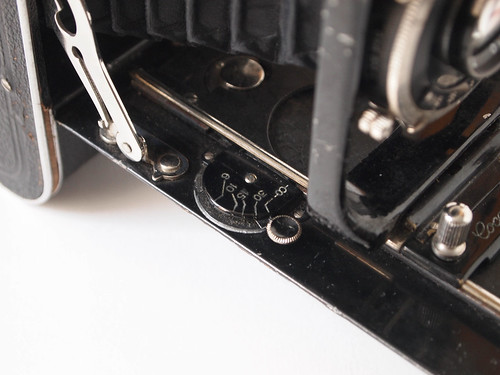 |
| Zeiss Ikon Cocarette focus lever |
From my earlier tests, and
using the camera during the summer, I realised that the focus scale was not accurate, and attempting to find out exactly why, I removed the panel at the back of the camera and using a loupe with some tape across the focal plane (I used some 120 backing paper with a hole in for the tape to best place this on the focal plane itself), it was clear that, when set to infinity on the scale, the lens was not extended far enough; at the 30ft mark, infinity seemed to be achieved. I then made the assumption, which I didn't measure, that I could simply shift each focus mark to the next nearest, so if 30ft is really infinity, then 15ft becomes 30ft, and so on. This worked well enough for the shots I'd taken on the last 116 Day, although a more permanent solution might be better, but the only practical way to do this would be to remove the infinity stop, which takes the form of a small peg screw, drill a small hole in the folding bed slightly forward of its original position, and replace it there.
As I wrote on my post for the summer's
116 Day, using 120 film in a 116 camera does make for an attractively proportioned image, especially suited to landscape photography, and, like the Zeiss Ikon Cocarette (despite my camera's focus issues which may yet require more attention), there are many of these cameras still around which can be used with currently available film with a little extra work.
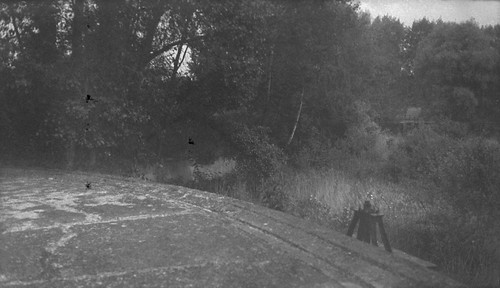 |
| Zeiss Ikon Cocarette with expired Kodacolor film |
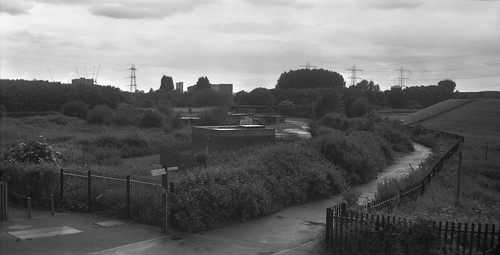 |
| Zeiss Ikon Cocarette with Agfa Superpan 200 |
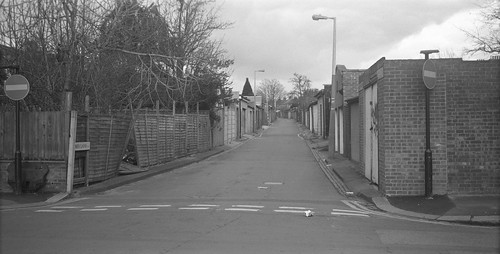 |
| Zeiss Ikon Cocarette with Fomapan 400 |
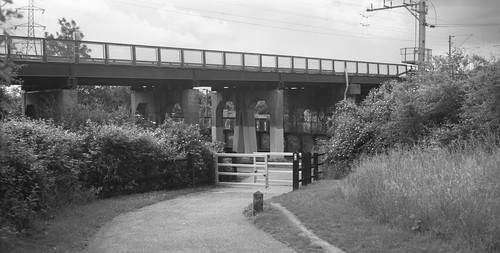 |
| Zeiss Ikon Cocarette with Ilford HP5 Plus |
Sources/further reading:
The Cocarette series on Camera-Wiki
Cocarette models on Early Photography
